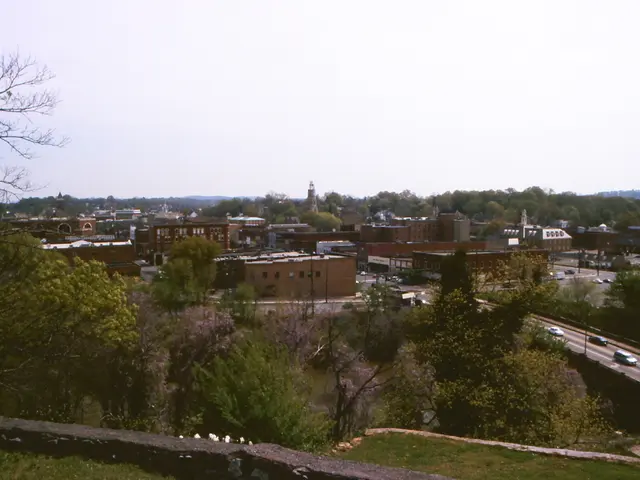Jewel box mansion, Montejo House, in Mérida, Yucatán – a Renaissance marvel
Discovering History and Art at Casa de Montejo in Mérida, Mexico
Stepping into the heart of Mérida, Mexico, visitors are greeted by a remarkable historical landmark: the Casa de Montejo. Built between 1542 and 1549 by Francisco de Montejo "El Mozo," the founder of Mérida, this mansion stands as a testament to the city's colonial origins and architectural evolution[1][2][4].
Casa de Montejo is a unique blend of history and art, housing period furniture, art collections, and historical artifacts within its preserved walls[1]. Its architectural style is a rare example of the Plateresque style of Renaissance civil architecture, characterized by highly decorative façades with intricate carvings[1]. The mansion's most striking feature is its sculpted coat of arms above the entrance, symbolizing the conquest of the Yucatán[1].
Today, Casa de Montejo serves as a museum, operated by Fomento Cultural Banamex. It offers free entry and guided tours, allowing visitors to explore the furnished rooms from the late 19th and early 20th centuries, and view art exhibits in its modern viewing spaces[1]. Over the centuries, the mansion underwent several transformations, including modifications in the late 19th century with French neoclassical elements[1].
Recent restoration efforts began in 2025 to preserve the structure and heritage of Casa de Montejo[1]. The museum showcases the lifestyle of Yucatán's upper class during the 19th and early 20th centuries, offering a glimpse into the region's history[1].
Located in Mérida's Plaza Grande, Casa de Montejo stands as a vivid testament to the city's rich past and enduring legacy[1]. Its elaborate reliefs, including the Montejo family coat of arms and imposing figures, are a must-see for anyone interested in art and history[1].
In summary:
| Aspect | Details | |-----------------------|-------------------------------------------------------------| | Historical Significance | Built in 1549 by Francisco de Montejo "El Mozo," founder of Mérida; showcases the lifestyle of Yucatán's upper class during the 19th and early 20th centuries. | | Architectural Style | Plateresque Renaissance style, notable for ornate façade and sculptural reliefs depicting conquest themes. | | Current Function | Museum with free entry and guided tours; ongoing restoration efforts to preserve the building. |
Visitors to Mérida should not miss the opportunity to explore Casa de Montejo and immerse themselves in the city's rich history and culture.
References
[1] Casa de Montejo (n.d.). Retrieved from https://www.casademontejo.com.mx/
[2] Casa de Montejo. (2019, July 16). Retrieved from https://www.britannica.com/place/Casa-de-Montejo
[3] Casa de Montejo. (n.d.). Retrieved from https://en.wikipedia.org/wiki/Casa_de_Montejo
[4] Mérida, Mexico. (n.d.). Retrieved from https://www.britannica.com/place/Merida-Mexico
Read also:
- Inequalities in colorectal cancer among racial groups: Insights and actions for support
- Liver Cancer Treatment Method: Insights into Function, Potential Sidelines, Efficiency
- Medical professionals at St. Remigius Hospital's rear facilities in Alexian
- Boron's Impact on Bone Health and its Connection with Bey (Title omitted)








